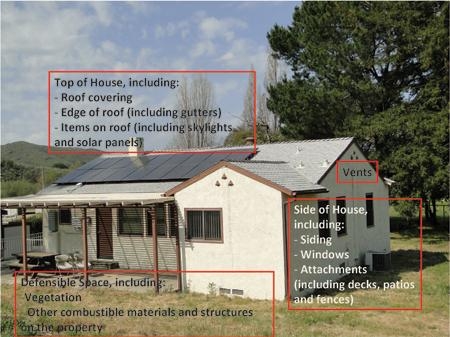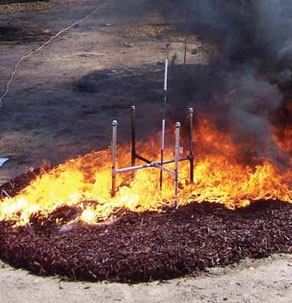Posts Tagged: mulch
Mulch the soil surface to save water in home landscapes
Mulch adds a finished, woodland-like quality to the garden, but that's not the only reason to spread organic matter on the soil surface. A layer of mulch conserves soil moisture, moderates soil temperature, and inhibits weeds, says Missy Gable, director of the UC Master Gardener Program, in the latest episode of UC Agriculture and Natural Resources' six-part home landscape water conservation video series.
Gable recommends the soil in home landscapes be covered with two to four inches of a fine- to medium-shred bark mulch. The mulch should not be applied too close to the bases of the plants so they won't be susceptible to rot.
UC Master Gardeners in Sonoma County have provided detailed information about various types of mulch, their benefits and drawbacks. For example, straw is a common, effective and inexpensive mulch. Alfalfa hay or pellets are more expensive, but because they are rich in nitrogen, give plants a nutrient boost.
Barks and hulls make an attractive, natural-looking surface. These products are often available at hardware and garden stores in bags, and in bulk at landscaping material suppliers.
Another cost-effective mulch is yard waste. Fallen leaves, grass clippings and chopped plant clippings of any kind can be spread on the soil surface to enhance and protect the soil, while reducing water evaporation.
View the video here:
View the previous videos in the UC ANR home landscape water conservation series:
Early-morning watering is best
Remove weeds from your landscape
The videos are also available on the UC ANR YouTube channel.
Coming next week, a video about using fertilizers under drought conditions.
An initiative to improve California water quality, quantity and security is part of the UC Division of Agriculture and Natural Resources Strategic Vision 2025.
Author: Jeannette Warnert
It only takes a spark
The Las Conchas fire that recently consumed nearly 137,000 acres in Los Alamos, N.M., serves as a reminder of how quickly fire can move if given fuel. I can’t light a barbecue with matches and lighter fluid, but a small ember drifting on the wind can find so many ways to burn down people’s homes if given the right conditions.
Removal of vegetation near Los Alamos National Laboratory, which is part of the UC system, created a buffer and helped spare the lab from the Las Conchas fire, which came within 50 feet. Creating a buffer is one of many preventive measures that can be taken to protect property from wildfires.
In a wildfire-prone area, even if you have a house with a concrete tile roof and noncombustible siding, an ember landing on landscape mulch, igniting plants around the home or floating into a vent on the house or under decks may set the house ablaze, warns a UC Cooperative Extension fire expert.
“From years of observing the aftermath of fires and testing fire-resistant building materials, we have developed a much better understanding about what happens,” says Steve Quarles, UC Cooperative Extension wood performance and durability advisor.
Quarles lists six priority areas for evaluating the vulnerability of homes in fire hazard zones: the roof, vents, landscape plants, windows, decking and siding. For details on how you can reduce the threat of wildfire to your home, visit Quarles' Homeowner's Wildfire Mitigation Guide.
“We know that the zone within about five feet of the home is very important to home survival during a wildfire,” Quarles says.
Landscape mulch provides many benefits to a garden, but Quarles and his colleague Ed Smith, University of Nevada Cooperative Extension natural resource specialist, found that many types of mulch are capable of catching fire and burning. Within five feet of a house, they recommend placing only rock, pavers, brick chips or well-irrigated, low-combustible plants such as lawn or flowers.
Quarles and Smith have published a new manual comparing the relative susceptibility of eight mulch treatments to igniting and burning. To download a free copy of “The Combustibility of Landscape Mulches,” visit the UC Fire Center website.

The scientists tested eight types of landscape mulches, shown in this test plot.



